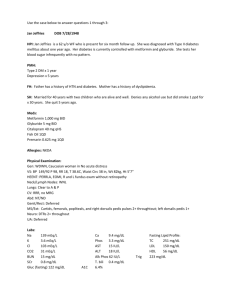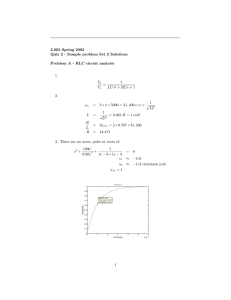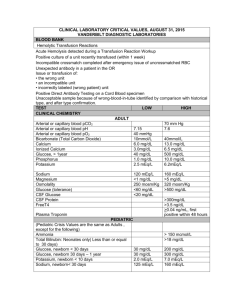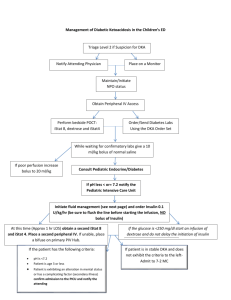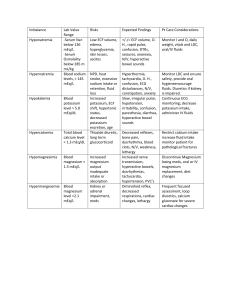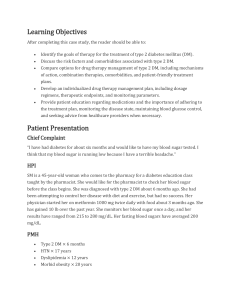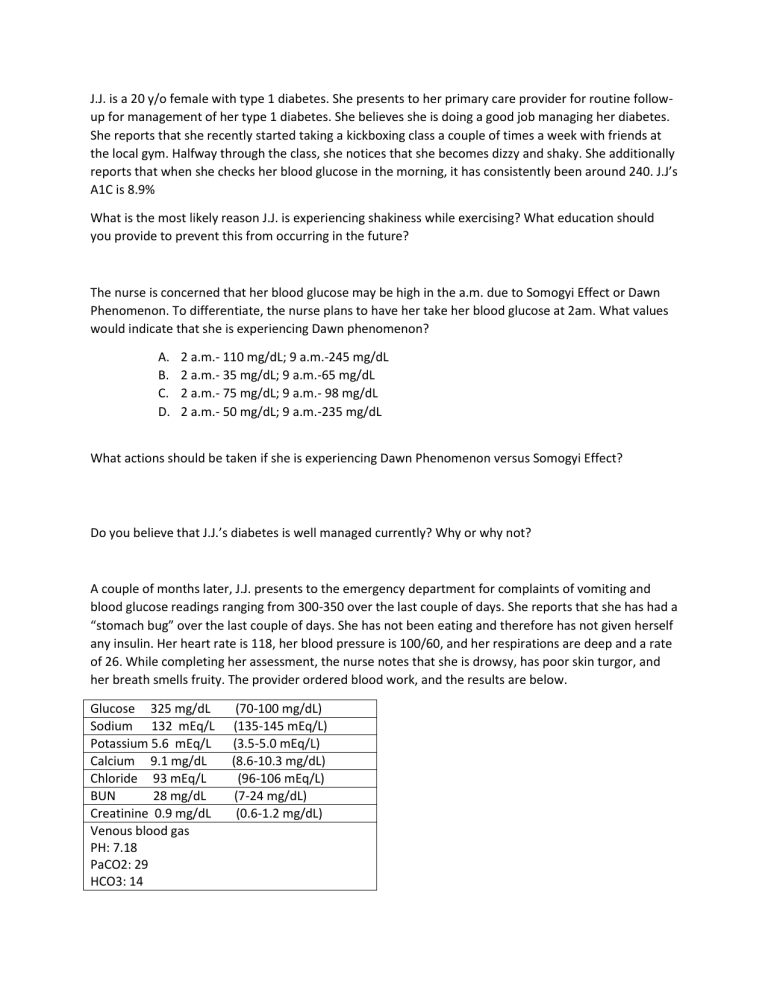
J.J. is a 20 y/o female with type 1 diabetes. She presents to her primary care provider for routine followup for management of her type 1 diabetes. She believes she is doing a good job managing her diabetes. She reports that she recently started taking a kickboxing class a couple of times a week with friends at the local gym. Halfway through the class, she notices that she becomes dizzy and shaky. She additionally reports that when she checks her blood glucose in the morning, it has consistently been around 240. J.J’s A1C is 8.9% What is the most likely reason J.J. is experiencing shakiness while exercising? What education should you provide to prevent this from occurring in the future? The nurse is concerned that her blood glucose may be high in the a.m. due to Somogyi Effect or Dawn Phenomenon. To differentiate, the nurse plans to have her take her blood glucose at 2am. What values would indicate that she is experiencing Dawn phenomenon? A. B. C. D. 2 a.m.- 110 mg/dL; 9 a.m.-245 mg/dL 2 a.m.- 35 mg/dL; 9 a.m.-65 mg/dL 2 a.m.- 75 mg/dL; 9 a.m.- 98 mg/dL 2 a.m.- 50 mg/dL; 9 a.m.-235 mg/dL What actions should be taken if she is experiencing Dawn Phenomenon versus Somogyi Effect? Do you believe that J.J.’s diabetes is well managed currently? Why or why not? A couple of months later, J.J. presents to the emergency department for complaints of vomiting and blood glucose readings ranging from 300-350 over the last couple of days. She reports that she has had a “stomach bug” over the last couple of days. She has not been eating and therefore has not given herself any insulin. Her heart rate is 118, her blood pressure is 100/60, and her respirations are deep and a rate of 26. While completing her assessment, the nurse notes that she is drowsy, has poor skin turgor, and her breath smells fruity. The provider ordered blood work, and the results are below. Glucose 325 mg/dL Sodium 132 mEq/L Potassium 5.6 mEq/L Calcium 9.1 mg/dL Chloride 93 mEq/L BUN 28 mg/dL Creatinine 0.9 mg/dL Venous blood gas PH: 7.18 PaCO2: 29 HCO3: 14 (70-100 mg/dL) (135-145 mEq/L) (3.5-5.0 mEq/L) (8.6-10.3 mg/dL) (96-106 mEq/L) (7-24 mg/dL) (0.6-1.2 mg/dL) PaO2: 85 What complication/disease is J.J. experiencing (be sure to provide rationale)? What orders do you anticipate from the provider? A couple of hours into initiating the orders, J.J.’s skin turgor has improved. Her blood glucose is 245 mg/dL, and her potassium is 4.8 mEq/L. Based on the results, what actions should the nurse take? Select All That Apply A. B. C. D. E. Place patient on a regular diet Add dextrose to the patient’s IV fluids Discontinue the insulin drip Discontinue the IV fluids Administer potassium IVPB or add to IV fluids It is the following day, J.J is now alert, and her labs show the following. She receives subcutaneous Insulin Glargine and is now ready to come off the insulin drip. Glucose 195 mg/dL (70-100 mg/dL) Sodium 136 mEq/L (135-145 mEq/L) Potassium 4.3 mEq/L (3.5-5.0 mEq/L) Calcium 9.3 mg/dL (8.6-10.3 mg/dL) Chloride 101 mEq/L (96-106 mEq/L) BUN 19 mg/dL (7-24 mg/dL) Creatinine 0.8 mg/dL (0.6-1.2 mg/dL) Venous blood gas PH: 7.35; PaCO2: 36; HCO3: 22; PaO2: 88 The nurse provides education to J.J. for managing her diabetes during illness to prevent DKA in the future. Which statement by the client indicates the need for further teaching? A. B. C. D. "I need to stop my insulin if I am vomiting.", "I need to call my doctor if I am ill for more than 24 hours." "I need to eat 10 to 15 g of carbohydrates every 1 to 2 hours." "I need to drink small quantities of fluid every 15 to 30 minutes."

